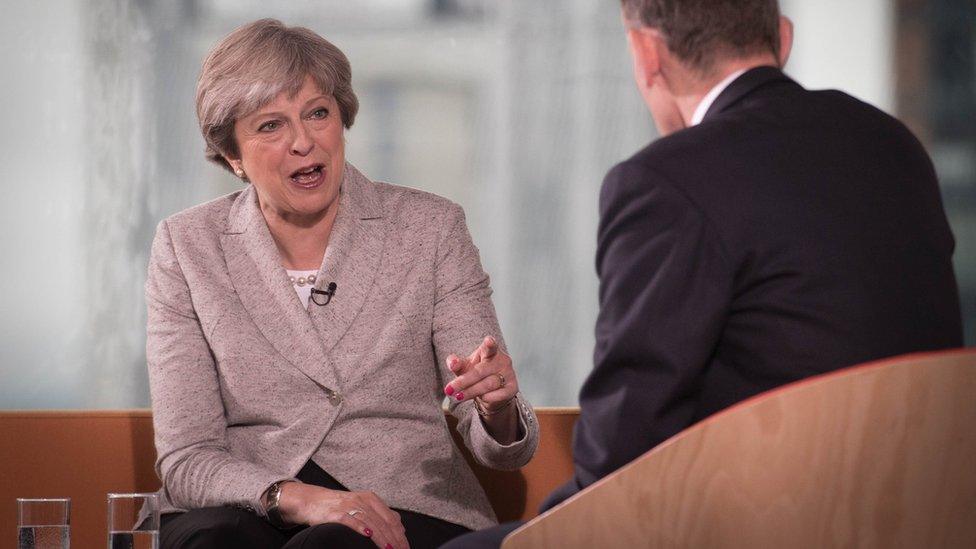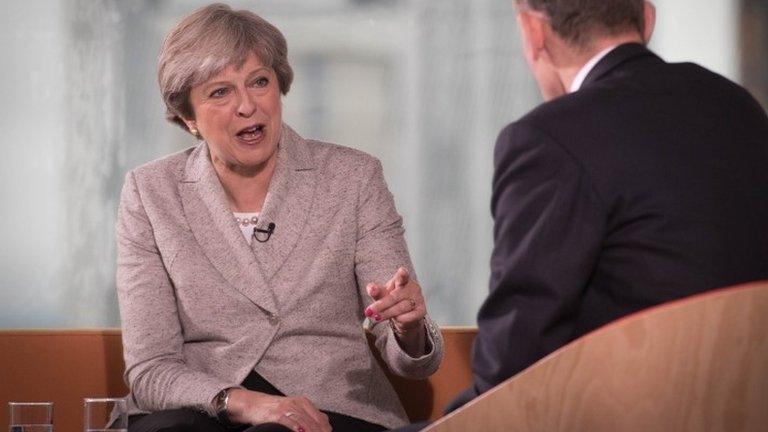The Olympic cost of Theresa May's tuition fees proposal
- Published

There has been a fair amount of sniggering that the government has announced a freeze in tuition fees - something the Telegraph heralded as part of a "revolution".
That will matter within the sector.
But it is unlikely to change Britain's electoral dynamics.
There is, however, one enormous and expensive change that is worth unpicking in all this: Theresa May also told the Telegraph that the government is going to raise the student loan repayment threshold from £21,000 to £25,000.
This has two big effects.
First, all graduates earning above the old threshold will now repay less in any given year.
A person earning, say, £30,000 a year would pay 9% of their income above £25,000 - not £21,000. So their flow of annual repayments would drop from £810 to £450.
Second, the interest rates charged on the outstanding balance for each student is tied to how far they are above the repayment threshold.
As a result, moving this threshold will also reduce the flow of interest accruing to the Treasury that might eventually be payable by ex-students.
A targeted cut?
There are good reasons for doing this.
Martin Lewis, founder of MoneySavingExpert, has been campaigning for the threshold to rise - it was, after all, promised.
And this change reduces the pinch on young people's pay very directly: it feels like a very targeted tax cut to some young graduates.
But, to channel the spirit of the Treasury, it is very expensive. Not in the short term, when I'd expect it would make a pretty small impact. But definitely in the longer term.

Demonstrations against the interdiction of tuition fees were held in 2010
Back in 2012, when the current student finance system took effect, the £21,000 threshold was supposed to rise steadily over time, but it was later frozen in nominal terms to save money.
The reason for the freeze was that the loss rate on student loans issued after 2012 was estimated to be around 45p in every pound lent out - higher than originally budgeted for. The freeze cut the cost and, combined with a few changes to how the cost is estimated, took the estimate down to about 30p.
By eye, I would estimate that this change would increase the cost by at least 10p in the pound. The losses would be over 40p in the pound. That is potentially a lot of money.
How much? This affects the so-called "Plan 2" debt pile, which stood at £44bn in the last debt statistics release.
This category is currently accruing at a rate of about £13bn a year. So with fees at current levels, it is heading to about £120bn at the end of this Parliament.
Even with the most conservative assumptions, we are talking well over £10bn of losses on the value of that debt by 2022.
Labour progress
That loss won't appear in any debt statistics in 2022 - but the losses will be there, and will slowly get added to the national debt between now and the 2050s.
It will happen subtly, but this is a "putting on the Olympics" level of outlay.
The politics of this are baffling, too.
The interest charge on outstanding debt - now at 6.1% for higher-earners and students still studying - was a major issue.
They could have gone for that without making the whole student finance system a lot more expensive.
This measure is a boon for current and recent students - but this looks like progress for Labour. It makes it harder for the government to defend the status quo by making it much dearer.
- Published1 October 2017

- Published1 October 2017
